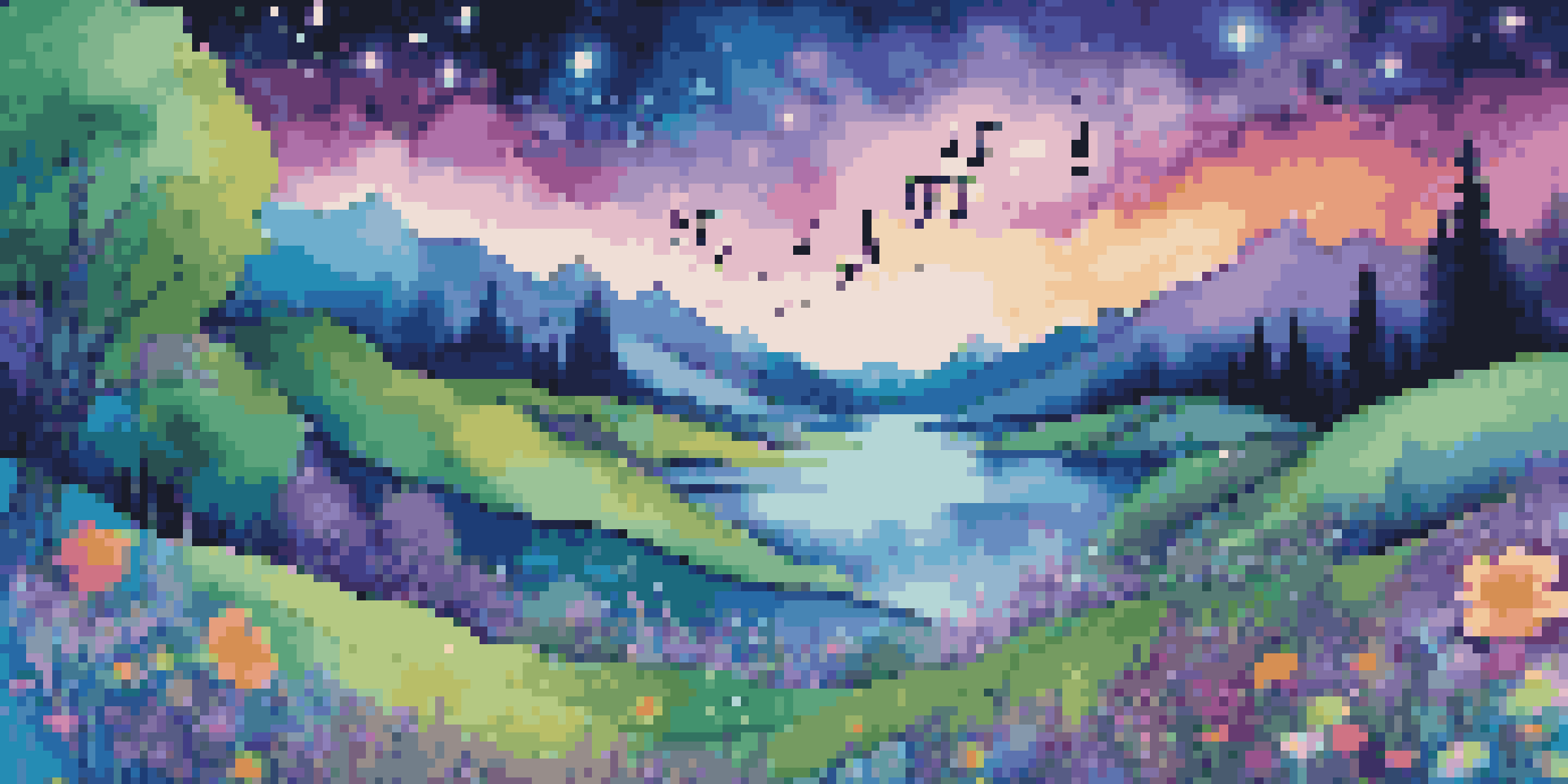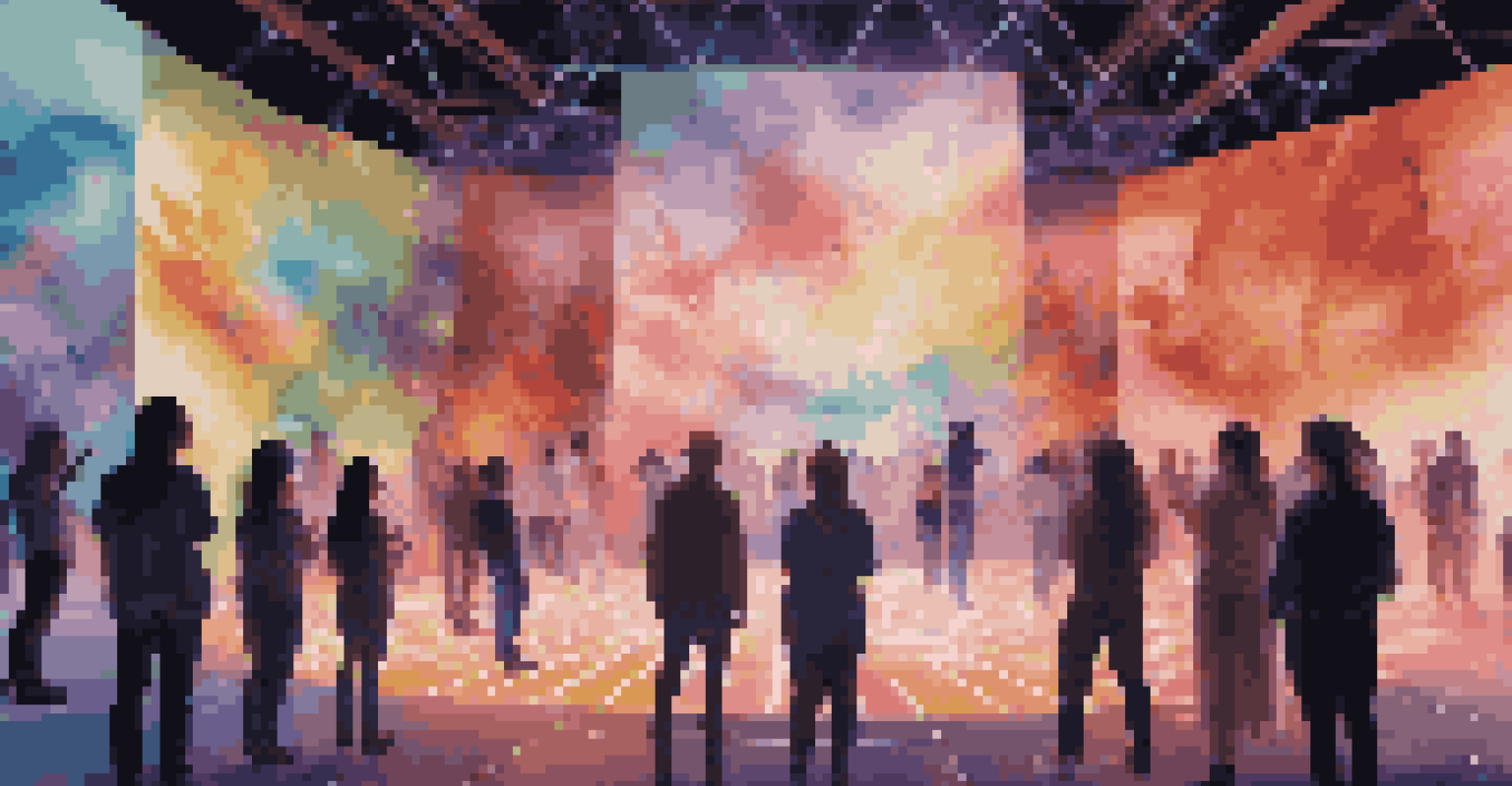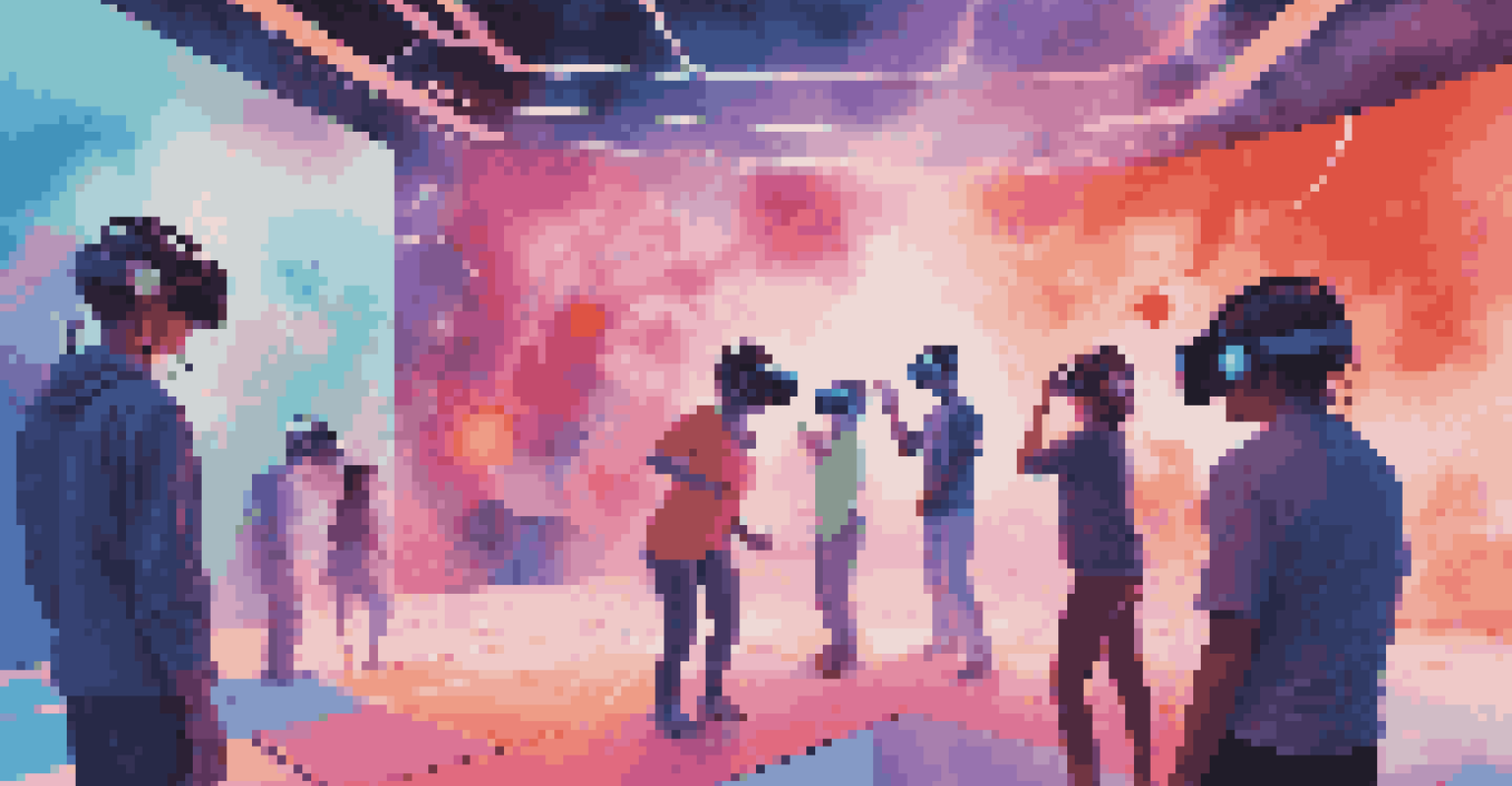The Relationship Between Digital Art and Music: A Creative Fusion

Understanding Digital Art: A Modern Canvas
Digital art has revolutionized how we create and consume visual content. Unlike traditional art forms, it utilizes technology to produce images, animations, and interactive pieces. This modern canvas offers artists a new realm of possibilities, allowing them to blend various media and techniques seamlessly.
Art is not what you see, but what you make others see.
For instance, a digital artist can manipulate photographs, create 3D models, or even design intricate animations with just a few clicks. The accessibility of software and tools has democratized art, enabling anyone with a passion to express their creativity. This shift has led to a diverse range of styles and genres, all thriving in the digital landscape.
As we explore this vibrant medium, it becomes essential to acknowledge how it intersects with other art forms, particularly music. Both digital art and music have evolved alongside technology, creating a fertile ground for collaboration and innovation.
The Evolution of Music in the Digital Age
Music has undergone a massive transformation with the advent of digital technology. Gone are the days when musicians relied solely on physical instruments and studio recordings. Today, artists use software to compose, edit, and produce music, often in the comfort of their own homes.

This evolution has not only changed how music is made but also how it's shared and consumed. Platforms like Spotify, SoundCloud, and Bandcamp allow artists to reach global audiences instantly, breaking down traditional barriers in the music industry. The ability to collaborate remotely has also flourished, enabling musicians to work together across continents.
Digital Art and Music Evolve Together
Both digital art and music have transformed through technology, enhancing creative collaboration and audience engagement.
As we dive deeper into this digital music landscape, we see its vibrant connection to digital art. The synergy between these two creative forms enhances the overall experience, creating a multi-sensory journey for audiences.
The Intersection of Digital Art and Music
Digital art and music often intersect in exciting ways, creating immersive experiences that engage audiences on multiple levels. Think about music videos: they combine visuals and sound, crafting a narrative that captivates viewers. Artists like Billie Eilish and Childish Gambino are known for their visually stunning music videos that enhance their songs’ messages.
Music expresses that which cannot be said and on which it is impossible to be silent.
Moreover, live performances have evolved into multimedia showcases where artists incorporate visual elements alongside their music. Visualizers, projections, and interactive installations create an atmosphere that draws audiences deeper into the experience. This fusion allows for more profound emotional connections and a sense of shared experience among fans.
Ultimately, the collaboration between digital art and music not only enriches the creative landscape but also pushes the boundaries of artistic expression. This dynamic relationship continues to inspire new generations of artists to explore and innovate.
The Role of Technology in Creative Collaboration
Technology plays a crucial role in facilitating collaboration between digital artists and musicians. With tools like Adobe Creative Suite for visual art and digital audio workstations (DAWs) for music, creators can seamlessly share ideas and enhance their projects. This synergy has led to innovative collaborations that might not have been possible in the past.
For instance, numerous artists are now experimenting with generative art, where algorithms create visual content in response to musical input. This interplay of coding, art, and sound opens up limitless possibilities for creative expression. Artists can become more than just creators; they become conduits for unique experiences.
Immersive Experiences Captivate Audiences
The fusion of digital art and music creates multi-sensory experiences that deepen emotional connections with audiences.
In today’s interconnected world, platforms for collaboration, like social media and online communities, enable artists to find partners and share their work easily. This technological backbone is reshaping how art and music are perceived, produced, and enjoyed.
Case Studies: Successful Fusion Projects
Several projects exemplify the successful fusion of digital art and music, showcasing the power of collaboration. A notable example is the 'Kyoto Protocol' project, where visual artists and musicians worked together to create a multimedia experience that addressed climate change. The combination of sound and visuals presented a compelling narrative that resonated deeply with audiences.
Another inspiring example is the work of the electronic music group ODESZA, known for their stunning live shows that incorporate breathtaking visuals crafted by digital artists. Their performances create an atmospheric experience that is as much about the visual journey as it is about the music itself.
These case studies highlight how collaborative projects can elevate both art forms, resulting in innovative works that leave a lasting impact on audiences. By combining talents, artists can push the boundaries of what’s possible in their respective fields.
The Impact on Audience Engagement
The fusion of digital art and music significantly impacts audience engagement, creating immersive experiences that captivate viewers and listeners alike. When audiences are presented with visually stunning artwork alongside compelling music, their emotional connection deepens. This multi-sensory approach transforms passive consumption into active participation.
For example, think about art installations that incorporate soundscapes or interactive elements. Visitors are not just observers; they become participants, engaging with the art in a personal way. This interaction fosters a sense of community and shared experience, enhancing the overall enjoyment of both art and music.
Future Innovations in Creative Fusion
Advancements like VR and AR promise to further revolutionize the intersection of digital art and music, inspiring new forms of expression.
As artists continue to explore this fusion, we can expect new and innovative ways to engage audiences, ensuring that the relationship between digital art and music remains dynamic and compelling.
Looking Ahead: The Future of Creative Fusion
As we look to the future, the relationship between digital art and music is bound to evolve even further. With advancements in technology like virtual reality (VR) and augmented reality (AR), artists have new tools to create immersive experiences that blend sound and visuals in unprecedented ways. Imagine stepping into a VR world where every sound you hear transforms the surrounding visual landscape.
This future also holds promise for collaboration across disciplines. Artists from diverse backgrounds can come together to create unique projects that challenge conventional boundaries. The digital landscape fosters an environment where innovation thrives, encouraging experimentation and pushing the limits of creativity.

Ultimately, the fusion of digital art and music not only enriches the artistic landscape but also inspires future generations to explore new forms of expression. The journey ahead is filled with exciting possibilities that are sure to captivate and inspire audiences worldwide.